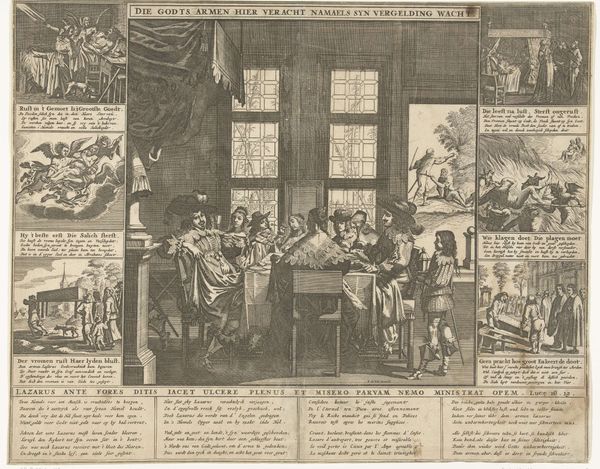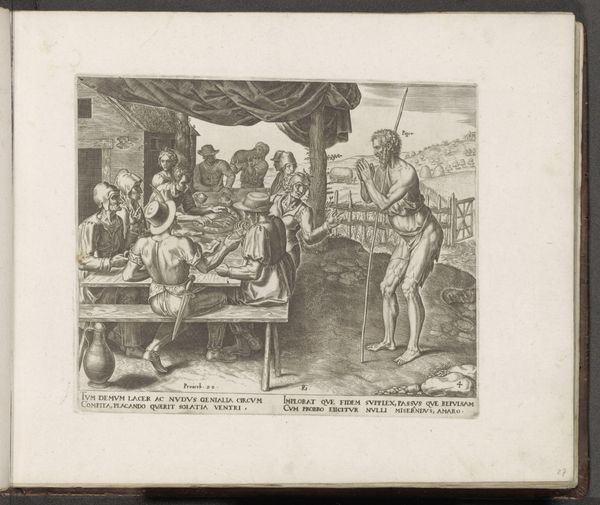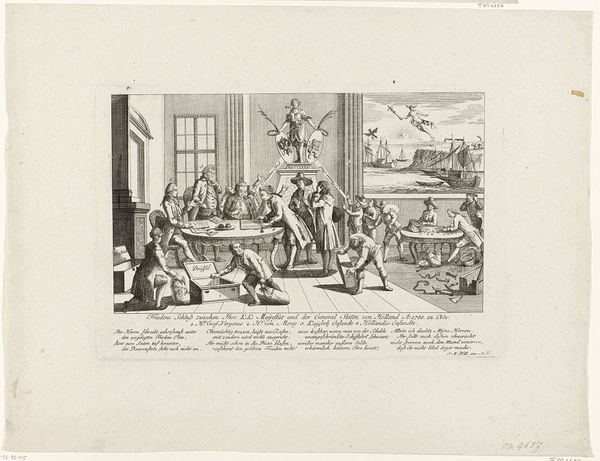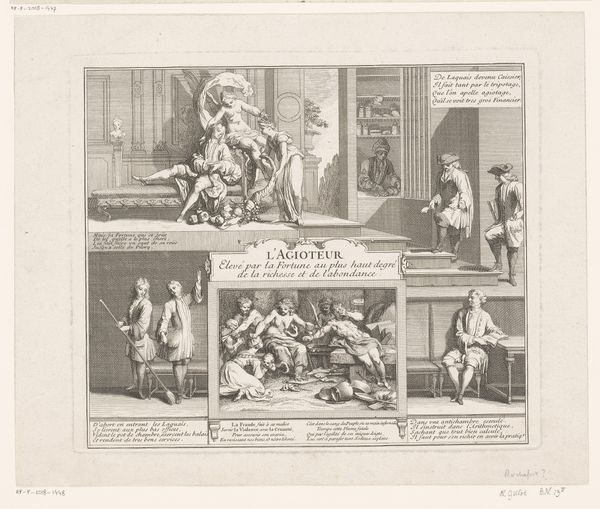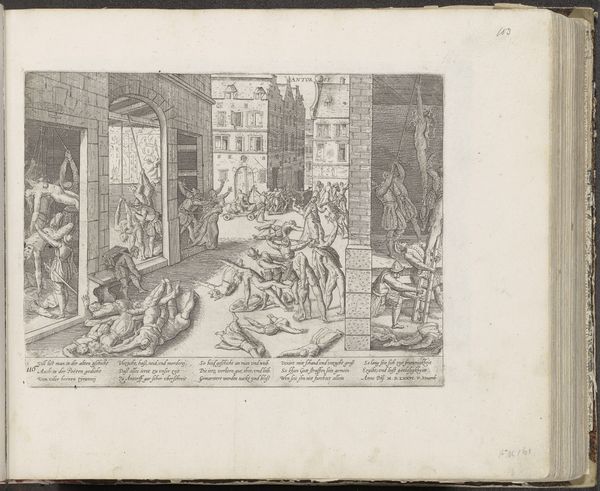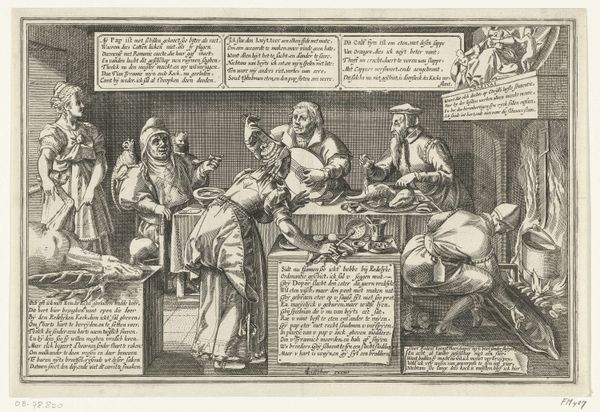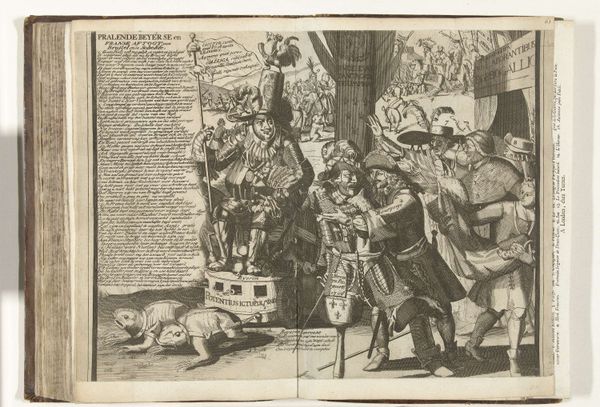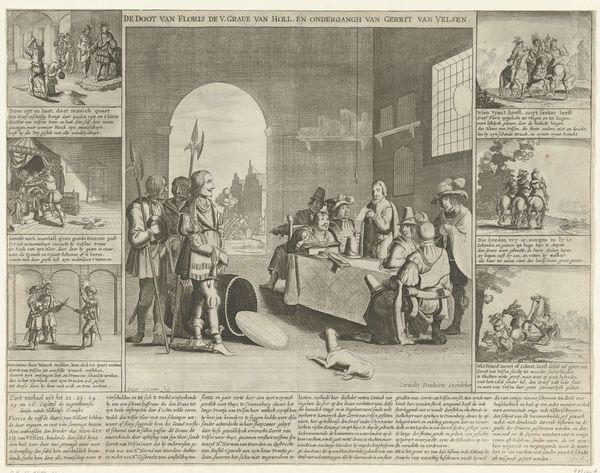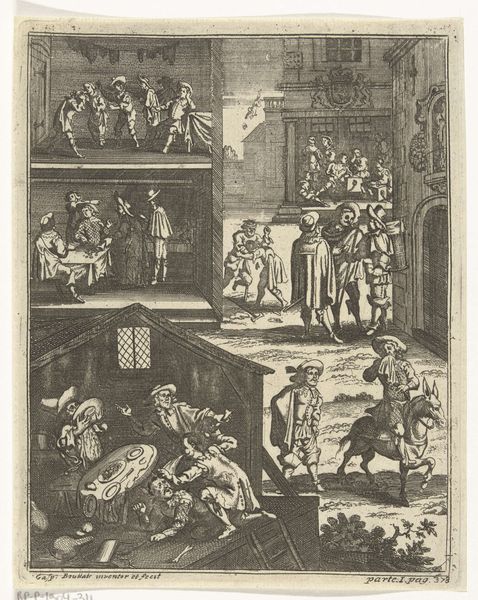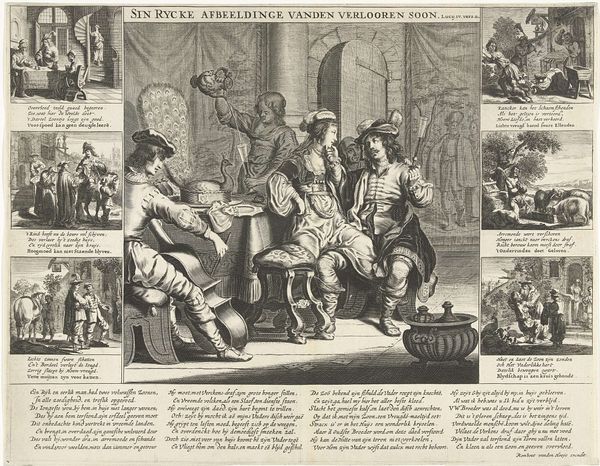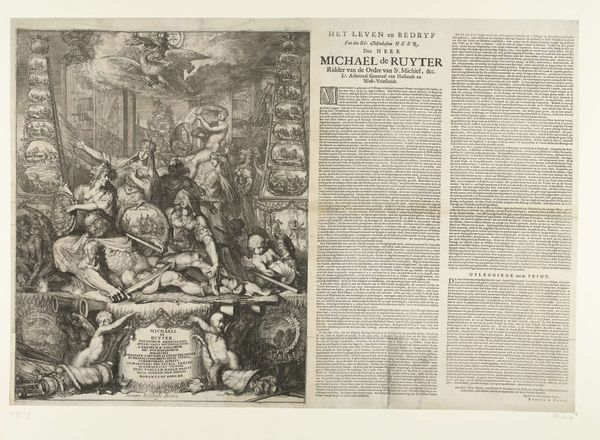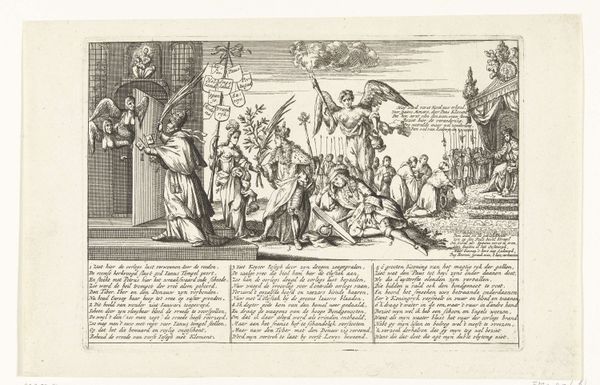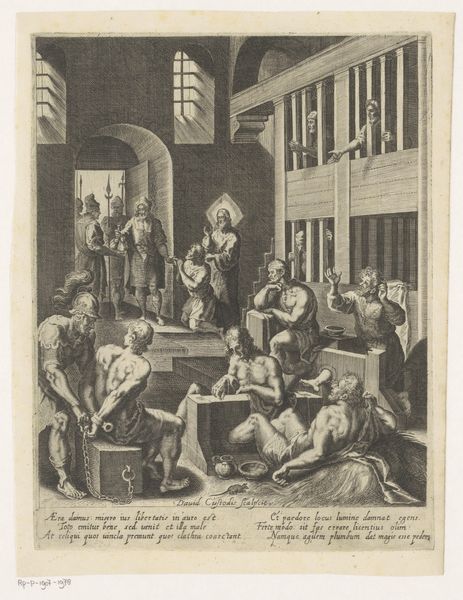
print, engraving
#
baroque
# print
#
old engraving style
#
genre-painting
#
history-painting
#
engraving
Dimensions: height 415 mm, width 509 mm
Copyright: Rijks Museum: Open Domain
Editor: This engraving, "Lazarus en de rijke man," which translates to "Lazarus and the Rich Man," dates back to sometime between 1677 and 1702. It's an anonymous piece currently held at the Rijksmuseum. I'm struck by how it uses the different vignettes to contrast wealth and poverty, heaven and hell. What social commentaries do you see embedded within this artwork? Curator: Absolutely. The stark contrast you've observed between Lazarus and the rich man isn't just a visual device, it’s a pointed critique of social inequity. Consider the historical context: the Baroque era was a time of immense wealth for some, coexisting alongside widespread poverty. This piece, by depicting the biblical parable, acts as a moral mirror reflecting the callousness of the wealthy towards those in need. What does this kind of imagery tell us about how the engraver viewed power dynamics within society? Editor: It suggests the artist was challenging the existing power structures and perhaps even advocating for a more equitable distribution of resources, a call for empathy maybe? Curator: Precisely. And let’s not ignore the scenes of divine retribution. The engraver interweaves the earthly and the spiritual, implying that social injustices have consequences that extend beyond the material world. In this way, the artwork also taps into religious beliefs about rewards and punishments to urge social reforms. To what extent does it also reinforce the status quo, by saying that suffering is rewarded after death? Editor: That's a really good point. While criticizing the rich, it could also be seen as placating the poor, telling them to just wait for their reward in the afterlife. Curator: Yes, its duality really reveals the complex intersectional position that poor people were occupying in the Early Modern Period. We should all leave the Rijksmuseum questioning how wealth disparity is impacting society even today. Editor: I learned to examine art as not only reflection of society, but also as something which affects it too. Thank you!
Comments
No comments
Be the first to comment and join the conversation on the ultimate creative platform.
